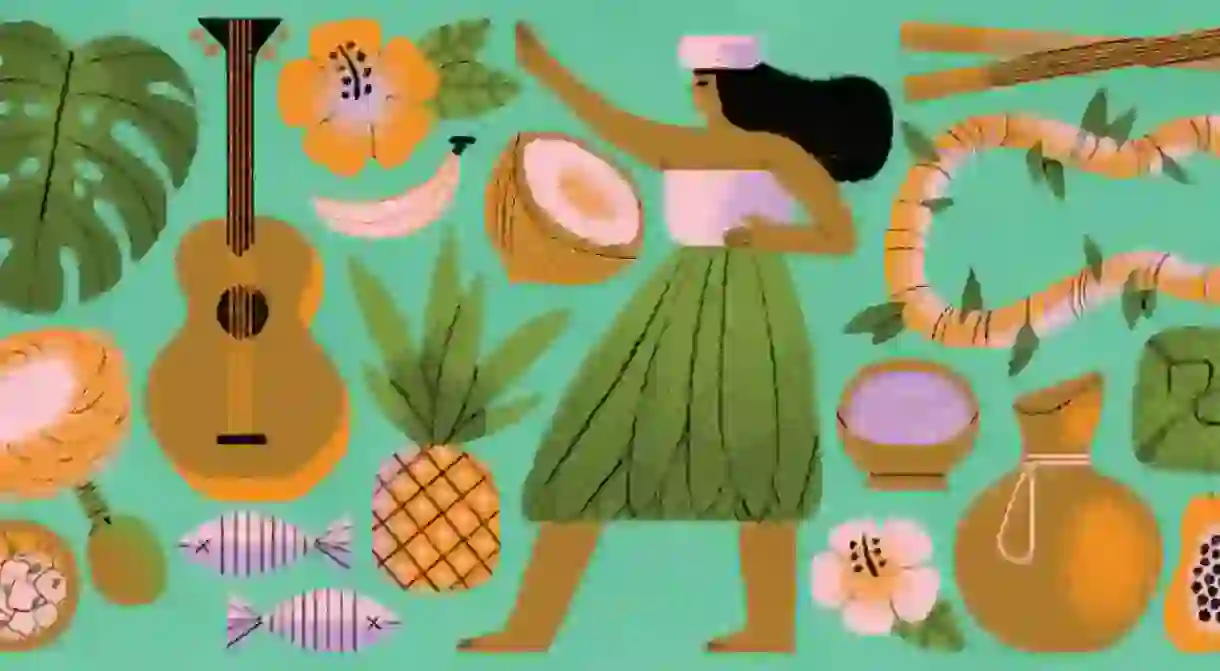A Brief History of the Hawaiian Luau

The Luau, a Polynesian and ancient Hawaiian ritual, is a popular social gathering meant to unite the people of a town in celebration of a significant life event, achievement, war victory, or launching of a new canoe. Originally called ‘aha‘aina, meaning ‘gathering meal,’ this celebration is centered around feasting on traditional cuisine like kalua pig, lomi salmon, poi, and haupia with friends and family with entertainment, including hula and traditional Hawaiian music.
Before the 19th century, the traditional religious practices in ancient Hawaii for the ‘aha‘aina included restrictions on the type of food eaten, who it was eaten with, and its symbolic meaning: men and women were to eat separately during the feast; common folk, and all women of all classes, were forbidden to eat certain Hawaiian delicacies like the traditional reef fish, moi, pork, and bananas – only the ‘Alii’, or ‘chiefs’ of ancient Hawai’i, and the King were allowed to indulge in these foods; and particular foods represented various things such as strength, virtues, or goals the person hoped to achieve. In 1819, King Kamehameha II ended the religious traditions of the ‘aha‘aina – to commemorate these changes, and as a symbolic gesture that major societal changes have just been made, he held a feast where he ate alongside women, giving way to a new feast: the present-day luau. The luau, meaning ‘taro plant,’ was named after one of the most popular dishes served at the feast: chicken and taro plant leaves baked in coconut milk.

The traditional feast was eaten off of lauhalas, large woven mats made from ti leaves, with diners sitting on the floor, using only their hands to eat. Beautiful centerpieces of ferns, leaves, and flowers lined the center with platters of meat, like lomi salmon and kalua pig (pork cooked in an underground oven called an imu), and bowls of poi, a classic Polynesian staple made from taro plant corn, laid on the mats; dried fish, sweet potatoes, and bananas were placed directly on the lauhala.

The royal luaus of the ancient Hawaii were large and lavish events, ranging from one hundred to over a thousand people at a single feast and with an abundance of food. The largest luau was in 1847 when Kamehameha III hosted a feast that required 271 pigs, 482 large gourds filled with poi, 3,125 saltwater fish, 1,820 freshwater fish, 2,245 coconuts, and 4,000 taro plants. King Kalakaua, known as the ‘Merry Monarch,’ also hosted a large luau – this one for his 50th birthday, inviting over 1,500 guests.

In the 1960s, the love of Hawaiian culture and rapid growth of tourism to the islands led to an increased popularity of luaus, transforming from a friends-and-family-only event to a popular tourist attraction. Today, visitors have the chance to experience Hawaii’s long-lasting tradition of royal luaus, gaining insight into traditional Hawaiian customs, food, and entertainment.













